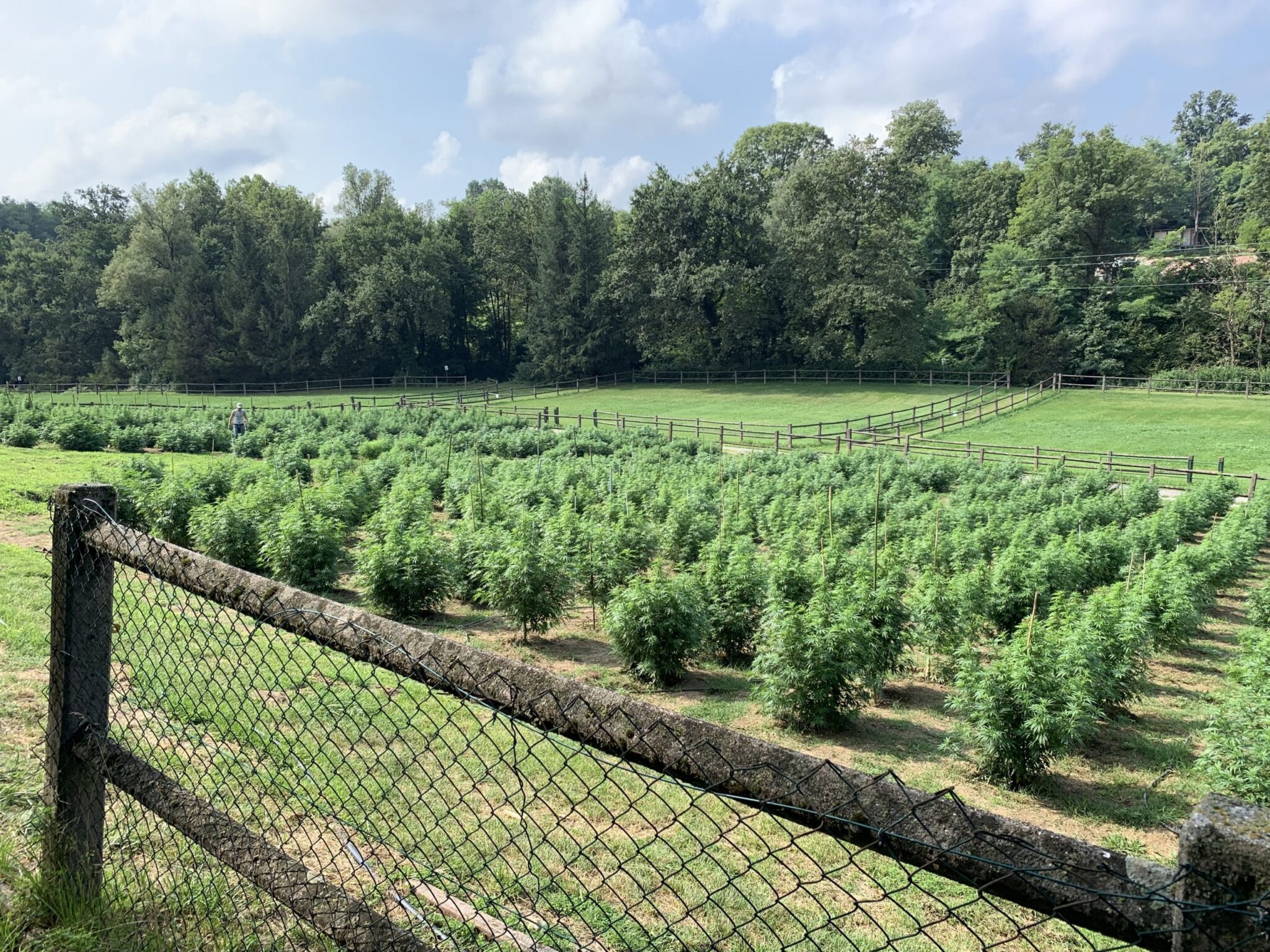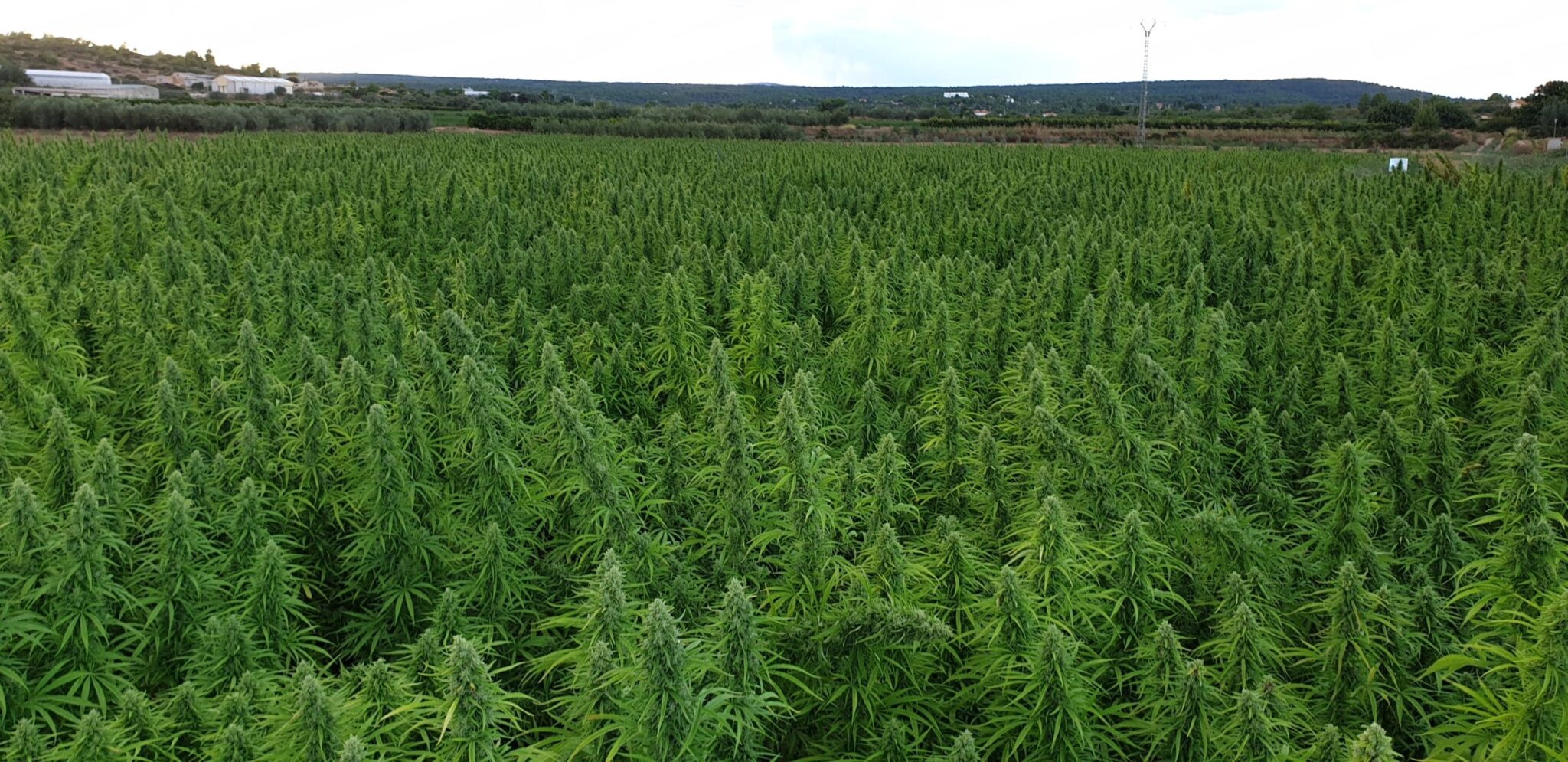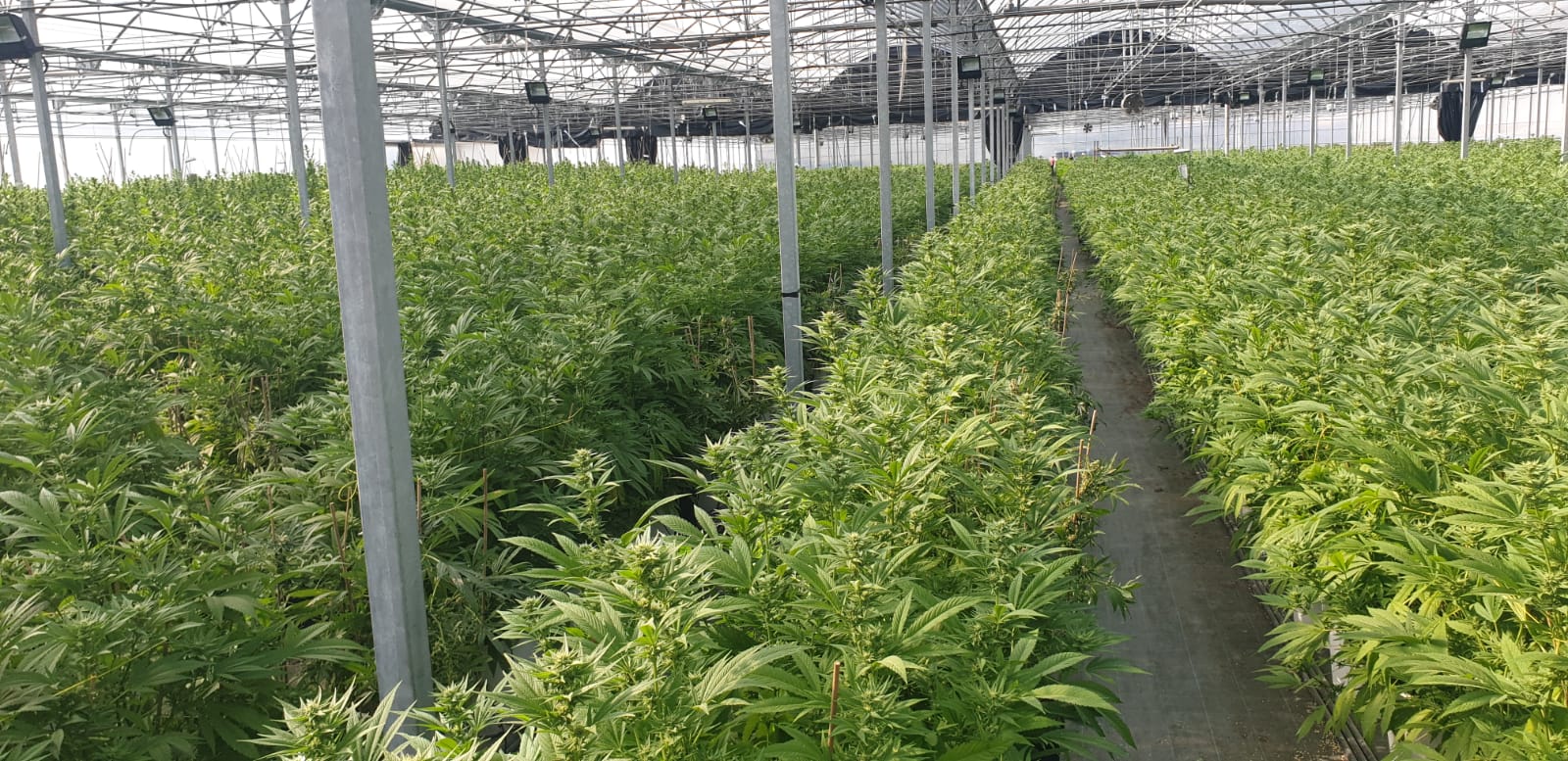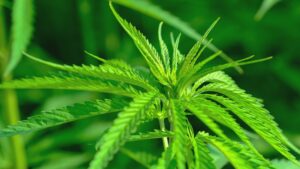After a long period of prohibition in most countries across the world, cannabis is slowly moving on a global scale towards a regulated legal environment. To produce cannabis varieties for various new medical applications and also for new differentiated recreational products, intensive breeding is underway at companies in Europe, North America and beyond.
At Dutch Passion Seed Company in the Netherlands, cannabis breeding priorities are equally focussed on characteristics related to final consumer products and also production traits such as yield.
“We’re working hard on creating new varieties with stable high percentages of CBD and new cannabinoids such as THCV and CBG,” explains Head of Genetics/Chief Breeder Mahmoud Hanachi. “We see a bright future for cannabinoid-specific cultivars, both in photoperiod and autoflower versions.”
Matthias Ghidossi, lead breeder and founder of Swiss Cannabinoid in 2018 in Stabio Switzerland, is focussed on breeding less well-known non-psychoactive cannabinoids like CBC and CBDV. “A main goal,” he says, “is to market something that nobody else has.”
[tweetshare tweet=”A main goal is to market something that nobody else has.” username=”8480af79fbfefc69a6537552e897589a”]
Meanwhile, at GreenSeal Cannabis Co. in Stratford, Ontario, Canada, the breeding focus is on producing varieties for medicinal applications but also those that meet the demands of increasingly discerning recreational consumers. “With every passing day, consumers are becoming a little more knowledgeable and capable of identifying more nuanced characteristics in how products taste and smoke,” says Lead Breeder Chad Morphy. “Most consumers have so far been focused on label information, which often begins and ends with cannabinoid content. In Canada, we’re less than two years into legalization, so consumers are just starting to figure out what they want, now that all these choices are available. It’s a welcome development that tastes are evolving, as it will shift focus to a more rounded and diversified set of genetics in the market.”
Having said that, Morphy notes that of the four main cannabis terpene profiles (earthy, fuel, fruity and floral), new consumers seem to like fruity profiles because they are familiar and therefore feel comfortable.

Drought and Disease Resistance
Most cannabis in Europe is grown in small-scale irrigated systems and is therefore protected from drought, but Ernesto Llosá, CEO of Hemp Trading Co. in Beniparell Spain, says he and his team “could see cannabis in non-irrigated land in the long-term.” Ghidossi adds that drought resistance “is definitely something I will be taking into consideration for the future.”
However, as with any crop, breeding for disease resistance is also important. Llosá notes that whilst cannabis is a strong plant and his firm already has some varieties very resistant to disease, “we have to be careful about the specific weather conditions in the country where we plant. For example, in Colombia we have varieties with high resistance to fungal diseases.”
The diseases Ghidossi focuses on in Switzerland are Fusarium, Botrytis, powdery mildew, Sclerotinia and hemp-corn borer. He explains that breeding in resistance to diseases is not that complex, but a matter of stress-testing and long-term selection.
At GreenSeal, Morphy says that whilst it hasn’t been very long (about a year) since Canadian firms have been permitted to grow cannabis outside of greenhouses and warehouses, disease resistance definitely factors into his breeding program. “If you have a cultivar that’s a superstar in every other dimension but shows a susceptibility to disease, generally you need to breed a hybrid combining the best traits of that plant with the hardiness of another, more disease-resistant cultivar,” he notes. “Then a selection process needs to happen to zero in on the versions of the new hybrid, combining the highest disease resistance with the other desirable traits. Once that’s achieved, you still need to stabilize by continually backcrossing the new cultivar over multiple crop cycles.”

New Variety Development
Indeed, genetic stabilization in Morphy’s view is considered one of the ‘brass rings’ of achievement among today’s cannabis breeders across the world. He explains that for a long time, producers operating in the underground market generally did not strive for stabilization, a problem which still lingers today.
“These breeders continually pushed for better yields and higher cannabinoid percentages but did not settle on one phenotype and stabilize it through multiple generations of backcrossing and selective breeding,” he says. “Over the past 20 or 30 years, breeding in North America was very much about creating new strains, where first generation (F1) genetics were bred with other F1s and still other F1s. Once a strong phenotype was identified, it was cloned for production rather than bred for stabilized seeds. So, in contrast to traditional agricultural products like corn, where you get a pack of seeds for one cultivar and they all grow exactly the same, you can’t find a pack of cannabis seeds these days where every seedling or plant it produces grows identically.”
This, he explains, has created a legacy of genetic instability that the legal cannabis market is still grappling with, since much of the source genetics for now-legal production originated from the black market. “It’s impossible to get a really stable strain without putting in a tremendous amount of work, with many cycles of backcrossing and selection using a large number of plants,” Morphy reports. “This is a watershed moment in the history of cannabis genetics as the industry is achieving the scale required achieve high levels of stabilization. Eventually, producers will be able to plant a field and all of the plants will be uniform. But the reality is that right now, most producers are still at the F1 stage with their production genetics.”
[tweetshare tweet=”This is a watershed moment in the history of cannabis genetics as the industry is achieving the scale required achieve high levels of stabilization. ” username=”8480af79fbfefc69a6537552e897589a”]
It is an interesting paradox, in Morphy’s view, since the original genetics of most cannabis plants comes from ‘landrace’ cultivars which were grown and stabilized over many generations of backcrossing in countries like Afghanistan and Thailand. “The landrace genetics have been washed out now by all of the hybrids-of-hybrids-of-hybrids that have been created over the last few recent decades,” he says, “and it’s ironic that the proliferation of cannabis genetics worldwide has actually reduced genetic stability and not increased it. We believe it should be an important mission for today’s growers to return to these best practices.”

Time to Stability
Swiss Cannabinoid just started marketing its ‘Matterhorn CBG’ cannabis seeds in April 2020, and Ghidossi says it took him three years to get it stable and ready for mass production. “How long it takes to make a stable variety really depends on what genetic material you start working with,” he notes. “It’s all about patience and trying different solutions.”
According to Llosá, it generally takes two to five years to develop a stable new variety. His approach to genetic stabilization is not to necessarily work just with male varieties, but sometimes feminised ones as well. “But mostly we work with clones in order to achieve stabilization,” he explains, “repeating the same crosses with the same individuals.”
Hanachi notes that achieving stabilization is not hard but agrees it is time-consuming. He says stabilizing varieties with a certain cannabinoid is one of Dutch Passion’s biggest priorities at the moment. “We are adding high-CBD/low-THC varieties to our collection which are still above the European legal standard of 0.2% THC, but very soon we expect to introduce several varieties with high CBD and THC below 0.2%,” he reports. “We are also working to stabilize varieties with cannabinoids other than THC and CBD. Currently our breeding work is most advanced with CBDV and CBG. Our latest variety is THC-Victory, which contains around 7% THC and 7% THCV, and as far as we know, it is unique as a THCV-rich variety.”
Recreational Versus Medicinal
In Hanachi’s view, it makes sense for companies who want to market medicinal products to want varieties with large amounts of one specific cannabinoid; they can then mix different extracted cannabinoids together into the desired final product. However, as Dutch Passion works towards this breeding goal, Hanachi and his team usually first launch a strain with a combination of high amounts of two or more cannabinoids such as THC-Victory. Then they continue working with the variety to reduce the level of the undesired cannabinoid (THC in the case of THC-Victory) to virtually nothing.
Llosá doesn’t see many differences between the process of breeding recreational and medicinal varieties, but both take time. With researchers at the Universitat Politècnica de València, he has developed a medicinal variety called Panakeia, which has no THC but 18% CBG (the precursor to both THC and CBD).
Morphy and his team at GreenSeal are also working to increase CBG content in select varieties, in their case through increased fatty acid production. He adds that CBD is also important. “CBD has the most interest in the market from a medical perspective and there is more research on CBD than any other cannabinoid,” he says. “Critically, it’s also the cannabinoid that is most legalized globally and it’s likely that in many jurisdictions, CBD products could be legal many years or even decades before THC products.” The vast majority of breeding work with CBD in Canada has focused on field-grown hemp, according to Morphy, but he sees a large opportunity to develop high-performing CBD cannabis cultivars that can be profitable in indoor cultivation.
[tweetshare tweet=”CBD is the cannabinoid that is most legalized globally and it’s likely that in many jurisdictions, CBD products could be legal many years or even decades before THC products.” username=”8480af79fbfefc69a6537552e897589a”]
Ghidossi notes that especially after the fairly recent crash in prices of CBD, it’s now the responsibility of breeders to offer some alternative varieties to producers so that the industry can be more stable and deal more effectively with any future fluctuations.
In terms of how medical research can affect cannabis breeding, in Ghidossi’s view, breeders cannot wait for medical research results. He notes that whilst cannabis breeders would all love to work with cannabinoids whose properties have already been established through clinical trials, that is a long way off. “So, it’s somewhat of a risk for a breeder to select for a certain cannabinoid as it might have a great deal of potential but never become mainstream,” he notes. “It took me three years to properly develop my CBG line for example, and when I started, not much research was done on CBG. We must make the best decisions we can.”
Ghidossi notes that breeding for recreational use is obviously mostly focused on obtaining very high-yielding varieties with high THC content and short flowering times, with not much attention paid to protecting the intellectual property. “Breeding for medical I believe is more about obtaining unique genetics and not at this point as much about yield,” he observes. “It is also more about resistance to pest and diseases, which was a factor not often considered in breeding for recreational use.”

Germplasm Sourcing
In terms of sources for Hemp Trading Co, Llosá buys genetics from other breeders’ firms and also uses university collections. “It can be difficult,” he says, “but we also always find a wide range of genetics in the hemp varieties that can provide high cannabinoid content through hybridization techniques.”
Ghidossi sources from all around the world and will try out any varieties which he believes hold potential. “For example, I’m now trying material from Japan and soon from China, and I also have in my genetic library more than 50 different mother plants for crossing and selecting,” he explains. “It is however becoming harder and harder to access germplasm, especially if you focus on minor cannabinoids. It’s a smaller market and not many people are breeding with that focus, so finding what I’m looking for is definitely more challenging than looking for sources relating to THC and CBD.”
Dutch Passion hunts landrace genetics from all around the world, purchases genetics from other firms and has its own 40-year old seed vault. It also receives genetics gifts from other breeders. Hanachi reflects that this is a result of the global cannabis breeding community developing an ‘open-source’ breeding model where breeders work together to some extent rather with than against each other. “The last few decades of cannabis prohibition actually have not been a bad thing for genetic availability,” he explains, “because it caused a community of breeders to develop. It’s a small but international community of people who have known each other for a long time and trust each other.”
Right now, Canadian cannabis firms are restricted to using genetics from a limited selection of domestically available cultivars within the regulated system. However, Morphy notes that right now there is a one-time opportunity for current producers to apply for a new licence to bring in genetics from around the globe. “We are moving forward with our application,” he says. “We just need to go through the process to meet the regulatory requirements and it will take a bit of time. It could allow us to access hundreds of cultivars from some of the best breeders worldwide.”

Innovations
These days, what is most exciting for Morphy as a cannabis breeder is the potential of new techniques that allow the genetic precursors to various traits (potentially including disease resistance) to be identified and manipulated at the DNA level. These techniques allow enhanced outcomes to be generated over timelines that are dramatically shorter than what has come before and is a focus of one of GreenSeal’s major current breeding projects.
GreenSeal has also entered into several R&D partnerships with university scientists. Although Morphy can’t share the details, he can say at this point that the research has already met several major milestones towards overall control of various desired qualities, such as higher yield, higher cannabinoid levels and enhanced terpenes. “Being able to manipulate the characteristics of a cannabis cultivar without needing to spend years on breeding and genetic selection is a goal we feel is within the near-term grasp of these collaborations, and could be transformative for the industry as a whole,” he says. “We look forward to being able to share more details in the not-so-distant future on this important work.”
However, Ghidossi sees value in traditional breeding if it’s done correctly. “Whilst new breeding techniques can speed up the process quite a bit, I have proven that old school breeding can be fast,” he says. “I guess you only need to be good at it.”
Main types of cannabinoids
- CBC (cannabichromene) – non-psychoactive and does not affect the psychoactivity of THC
- CBCV (cannabichromevarin)
- CBD (cannabidiol) -non-psychotropic & counteracts cognitive impairment associated with the use of cannabis
- CBDA (cannabidiolic acid)
- CBDV (cannabidivarin) – minor constituent of the cannabinoid profile
- CBE (cannabielsoin)
- CBG (cannabigerol) – non-psychoactive but still contributes to the overall effects of Cannabis
- CBGM (cannabigerol monomethyl ether)
- CBGV (cannabigerovarin)
- CBL (cannabicyclol)
- CBN (cannabinol) – primary product of THC degradation, and there is usually little of it in a fresh plant. CBN content increases as THC degrades in storage, and with exposure to light and air
- CBT (cannabicitran)
- CBV (cannabivarin)
- THC (tetrahydrocannabinol) – primary psychoactive component of the Cannabis plant
- THCA (tetrahydrocannabinolic acid)
- THCV (tetrahydrocannabivarin) – antagonist of THC at CB1 receptors and lessens the psychoactive effects of THC
Want to read more? Check these out:
https://european-seed.com/2020/09/the-cannabis-story-continues/
https://european-seed.com/2020/08/hemp-is-coming-back-for-the-good/
https://european-seed.com/2020/08/need-an-alternative-for-paper-textile-and-plastic/
https://european-seed.com/2020/08/breaking-the-grass-ceiling/












